When navigating the twists and turns of the SEO blogosphere, the term semantic SEO often brings to mind internal linking, the semantic cocoon, and how to enrich our content with more refined semantics.
But, beyond these aspects, the heart of semantic SEO beats thanks to entities.
Curiously, they seem to be forgotten in discussions. Why this omission in the debate?
I’m not exactly sure, but today, I’d like to shine the spotlight on them.
What is an entity?
Let’s dive into the heart of the matter. What is an entity? In simple terms, it’s a word, an object or a concept that has its place and meaning within Google’s Knowledge Graph.
And to give an idea of the scale: According to the latest information, Google lists no less than 500 billion facts spread across five billion entities.
The structure of an entity
At the heart of knowledge graphs, and especially the Google Knowledge Graph, an entity is not an isolated element. It weaves links with other entities, creating a dense network through relationships.
To illustrate a minimal instance of a knowledge graph, let’s consider a simple relationship within the Google Knowledge Graph, known as a ‘triple’. Below is an illustration of how a knowledge graph is constructed. Semantic referencing is all about entities, connections and relationships.
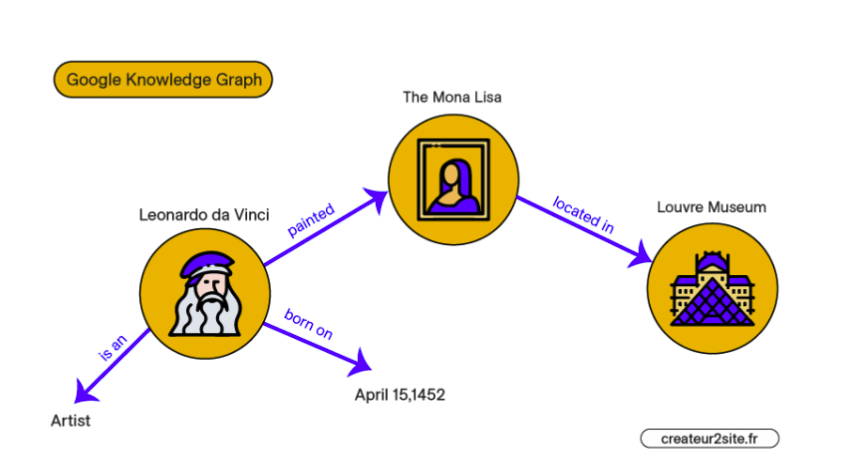
In the graph, we have an entity called ‘Leonardo da Vinci’ and ‘born on’, ‘is an’, and ‘painted’ are the triples, a combination that links one entity to another through a relationship.
Let’s observe another example. As you can see below, the triple is the term ‘President of‘ as it links the first entity to the second.
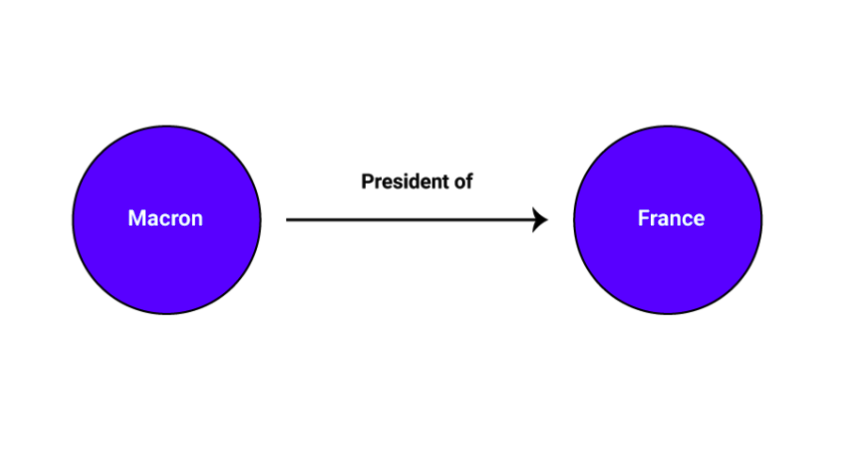
It is also important to note that an entity is not static. It can have many attributes or be connected to other entities, thus enriching the network of information; that is to say it can have a number of triples.
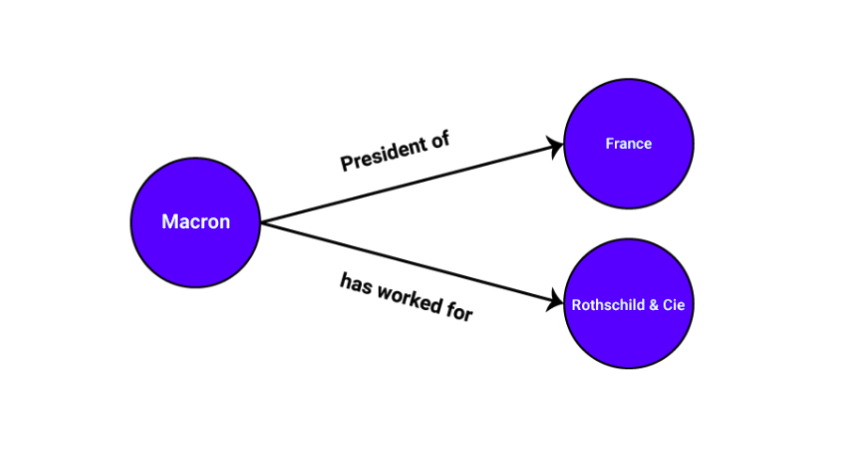
How can an entity improve your semantic SEO?
When Google crawls your web pages, it extracts sentence structure to understand and entities to decrypt the entire semantics of your content.
To illustrate this point, let’s take a concrete example from a Google patent.
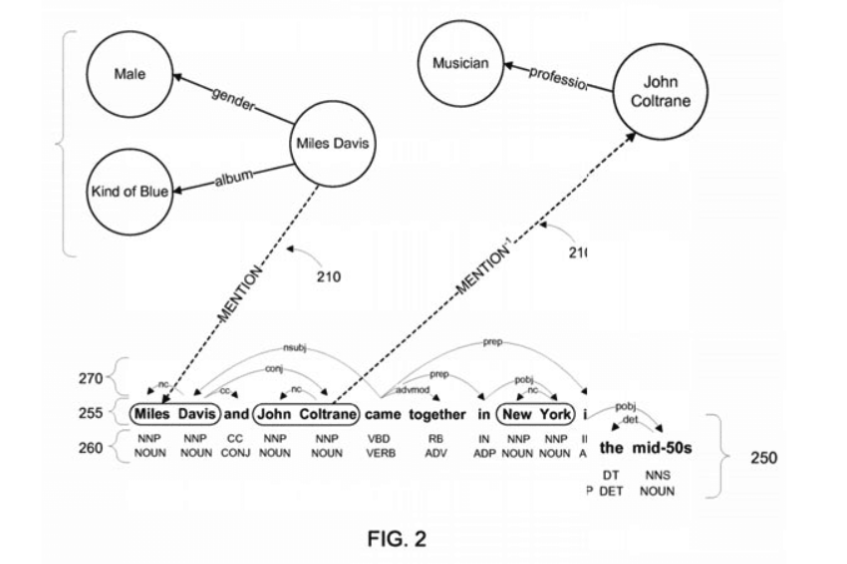
In this patent, the relationship between Natural Language Processing (NLP), which enables Google to understand text, and knowledge graph entities is clearly demonstrated.
To be specific, this entire process is termed NLP and includes Named Entity Recognition (NER), a technology for identifying and classifying named entities such as names of people, organizations, and places. This is directly connected to the Google Knowledge Graph and its entities.
While integrating keywords into your content helps Google understand the subject of your writings, entities offer an additional dimension to this understanding.
Now, imagine you write an article titled “How to Learn SEO” in which you mention abondance.com, a recognized reference in the field.
Google will likely identify “abondance” as an entity, which can have multiple meanings and refer to various homonyms, but they have nothing to do with the site on natural referencing.
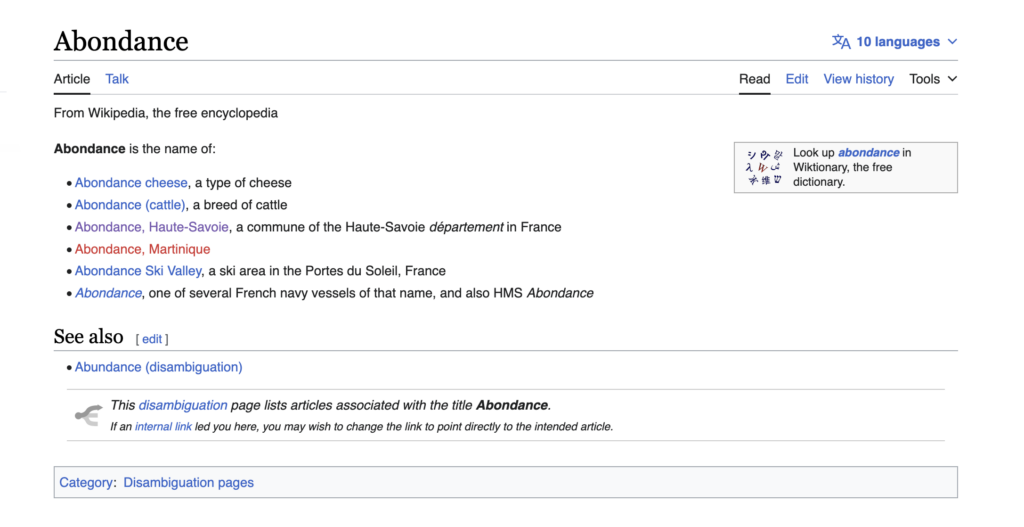
However, if you mention Olivier Andrieu, a light comes on for Google. As Olivier Andrieu is well anchored in Google’s Knowledge Graph, the search engine knows that he is an eminent French SEO consultant and probably associates his name with the site abondance.com.
By highlighting such an entity, you give more semantic relevance to your content in Google’s eyes.
In short, integrating relevant entities into your articles or pages can significantly improve your positioning in Google search results and it will help users and search engines better understand the meaning and context of your page.
Google does still have limits in semantic understanding
An essential point to grasp is that Google does not perfectly master semantics.
Even if we have established that including entities enriches Google’s comprehension of your content, the search engine giant still has limits in its understanding of semantics and entities, even when they are clearly expressed.
Statistically speaking, Google only grasps 14.5% of themes. While some achieve a comprehension rate of 25%, others are much less well interpreted. To deepen this analysis, you can consult the exhaustive study on different themes.
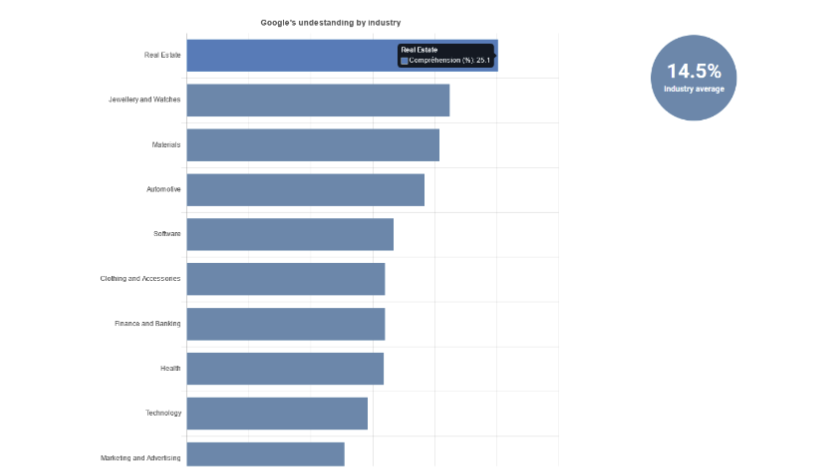
Source: inLinks
Even more surprising, when searching for “SEO” in the knowledge graph, Google does not always understand the acronym and will show the capital of South Korea as the closest reference.
You can see that on the webpage ‘AI Natural Language‘ when you scroll to the ‘Natural Language API Demo‘ field to gain insights into how NLP operates.

And, if I use the Google Knowledge Graph API directly through Google Cloud Platform, we can see the details in the form of JSON-LD format as illustrated below.
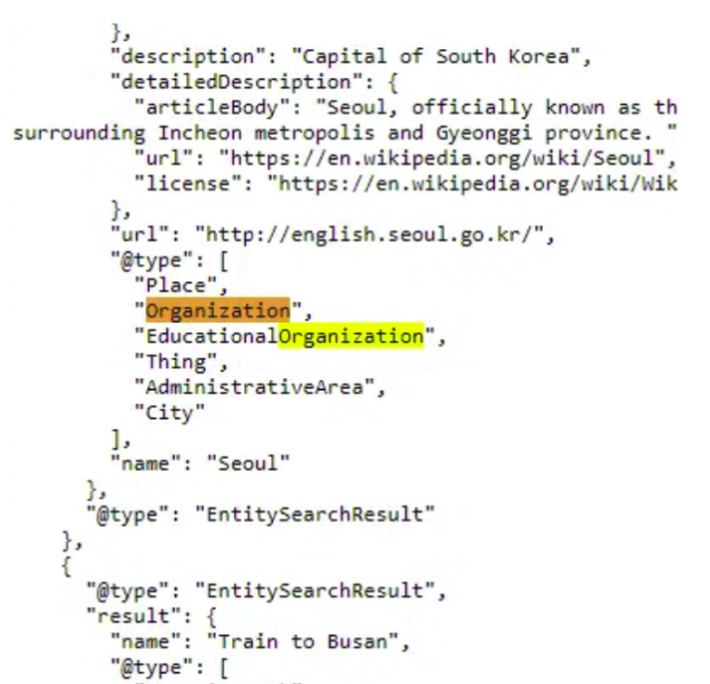
This means that for Google, terms like “natural referencing” or “search engine optimization” are more explicit. In other words, if you write an article dedicated to SEO, it would be wiser to use one of these complete expressions to ensure understanding by the search engine.
How to improve your semantic referencing
The world of semantic SEO is deeper and more diverse than we often think. Entity-based referencing, for example, involves several essential steps:
- Conduct an audit on the entities related to your theme to better identify them.
- Develop content focusing on topics and entities, rather than strictly limiting yourself to keywords.
- Establish a judiciously organized content mesh around a group of entities.
- Integrate semantic structured data.
- Aspire to become a recognized entity on the Knowledge Graph. Don’t just settle for basic backlinks, but make sure your name is cited as a reference.
When searching for entities, remember that these are not just generic keywords gleaned during a keyword search. These entities are much more precise: they represent ideas, places, individuals, objects and dates.
[Ebook] Using projections to reinforce an SEO strategy
1. Identify relevant entities
When diving into semantic SEO, especially when it’s about entity SEO, it is essential to conduct an entity audit, i.e., searching for the entities related to your topic of choice.
So, where to start? An effective way to go about your semantic research is by opening Google and entering the most encompassing keyword of your topic followed by “wikipedia”. (Yes, wikipedia!) Then, initiate your search.
For this article, we will use the keyword “artificial intelligence” as an example.
Once on the Wikipedia page of your topic, scroll through the entire content. At the end of an article, Wikipedia often presents several related terms. For instance, you might come across a section titled “See Also” – very similar to Google’s People also ask SEPR feature.
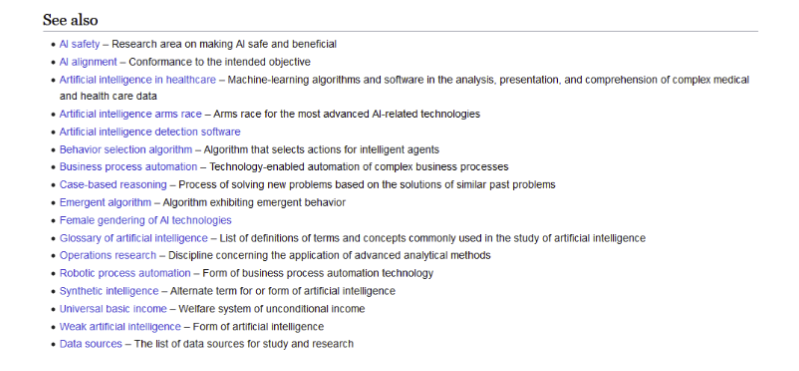
At this point, I would advise you to note all these entities. From there, you can consider writing blog articles related to these subjects as a means to enhance your semantics.
But, we can do even better if you keep scrolling to the end of the page.

Here, you can find categories, which can all serve as entities, sorted alphabetically, for a topic.
So, if I click on “Artificial intelligence,” I come across (usually) all the entities related to that term.
We even get a “main category”, i.e., what is closest to the main entity, and a “sub-category”, which are the distant entities but still related to the main category.
Pages in category “Artificial intelligence” (main category)
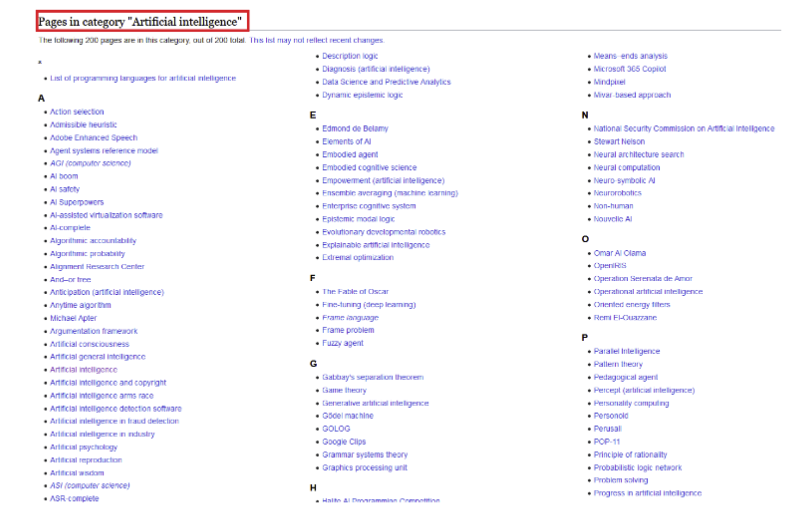
Subcategories
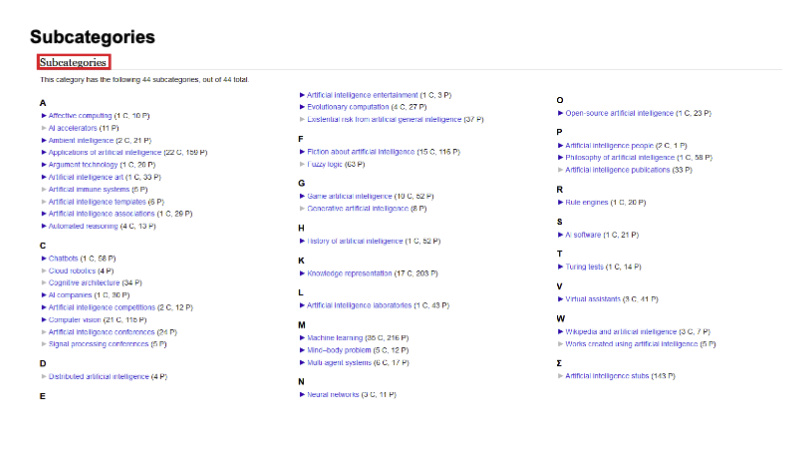
There you have it, an efficient way to identify the main entities around your topic. Note them down!
You can even go one step further and retrieve other similar entities by browsing the categories related to artificial intelligence.

On the other hand, if you’re handy with Python, you can use the NER process I mentioned above to collect the information you’re looking for. There are a number of open source tools available that you can use including spaCy, NLTK, or BERT.
Personally, I have my own small python script that uses artificial intelligence to classify entities. It’s not yet fully developed and sometimes misses some entities, but it’s great for creating an internal linking structure and SEO-friendly URLs.
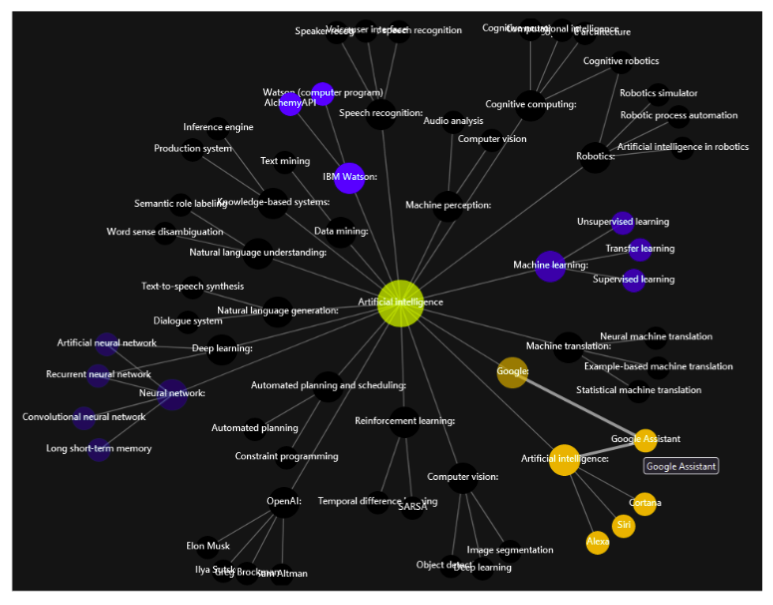
I also made sure it provides me with associated Wikipedia links, as it could help with semantic structured data (a term I think I invented?)
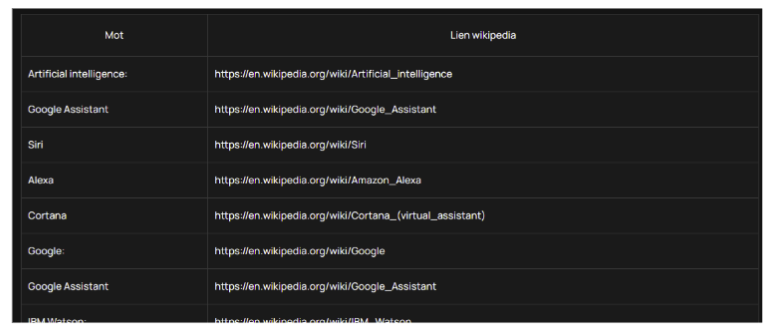
So, I know what you’re thinking; if you don’t have access to this tool, it’s pointless.
Well, you’re correct, but this was just an example to show you all the exciting options available to you if you’re open to Python!
2. Write about your topic entities
Now that you’ve identified the central entities of your topic, the next logical step? Create dedicated pages for each of them.
But why this approach, and why do I recommend it?
You’ve probably already heard that to rank better, you need to write blog articles to increase your thematic authority. That’s precisely what will happen if you discuss all the entities related to your topic.
Most of the time, you will naturally fill at least a third of the entities of the Google Knowledge Graph if you write a lot about your topic.
All you have to do is bridge any gaps that you may have missed, thereby becoming a veritable authority on your topic.
Yes, the approach may seem relatively simple and straightforward. However, depending on the density of your topic, it can be monumental in terms of writing. Fortunately, the modern era offers precious help: AI-assisted writing, available to everyone!
3. Use Google Docs for semantic SEO
Another technique I would suggest using is to write your pages or articles using Google Docs. Although it’s not a dedicated SEO tool, it can offer semantic suggestions for your content.
To unlock this hidden potential, go to the Tools tab in the top left and click on Explore.
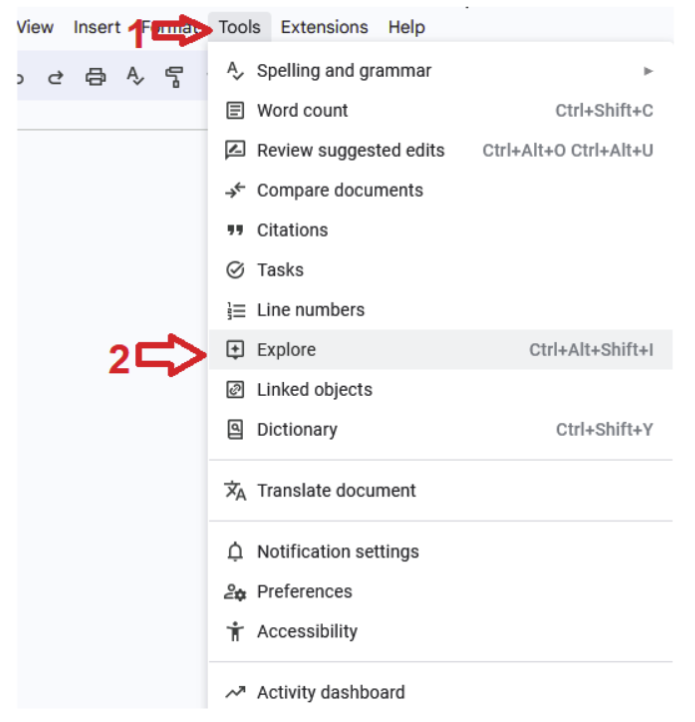
After that, you will be able to see additional topics relative to your article.
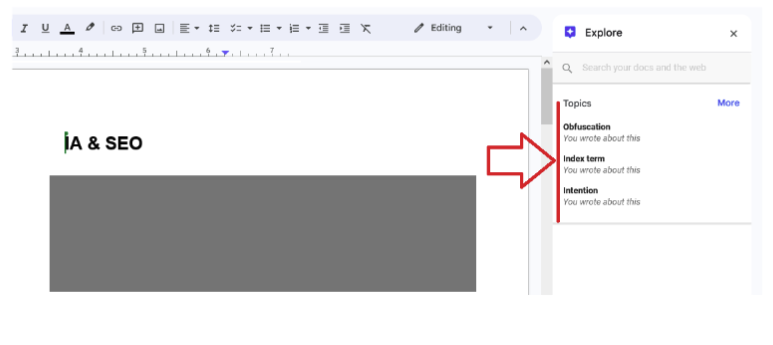
If you identify any topics you think would be important to address in your article, but you haven’t yet, now is a good time to add those topics.
You can also click on More to find additional suggestions.
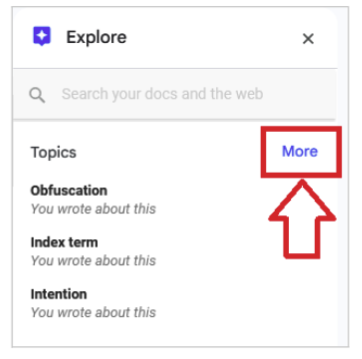
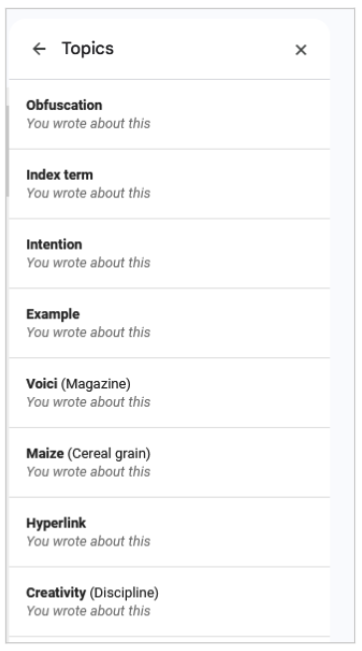
What can you do to effectively use these suggestions?
Enrich your content with relevant information about these entities
Don’t just add keywords; provide contextual information. Taking the example of the Eiffel Tower, you could mention historical facts, its exact location in Paris, its height, its construction, etc.
Use synonyms and variants
Don’t just focus on one keyword or phrase. Incorporate synonyms and variants to offer a rich semantic tapestry.
Long-form content
Think about creating long articles or content. They generally allow for a deep dive into a topic, which offers the opportunity to naturally incorporate a variety of terms and related concepts, thus enhancing semantic relevance.
4. Semantic structured data
Implementing semantic structured data essentially means rethinking the way we assist Google in understanding our site. In your structured data, you should include the entities mentioned and valued in your content.
Below is an example of what this could look like:

When you refer to definitions from Wikipedia, you are actually optimizing your site for semantic SEO, a technique often called “Wikification”. Hence the importance of having introduced the subject at the beginning of this article.
Let’s look at a simple illustration.
If you use the word “Paris” in your content, what does it refer to? The famous city in France, the city in Texas, Paris Hilton or Paris Jackson?
It is crucial to clarify such nuances in your structured data.
5. Become an entity
Despite the beginning of a gradual move to reduce its dependence on Wikipedia, a lot of Google’s Knowledge Graph results are still pulled from the knowledge source. And while Wikipedia doesn’t decide whether something is an entity, it is one of the better known entity databases. Becoming an entity on Wikipedia therefore remains an effective way to be listed in Google’s Knowledge Vault.
If you aren’t already present on Wikipedia, you can generally become an entity by associating with an existing entity on Wikipedia.
Becoming a fully defined entity is beneficial because once you are in Google’s Knowledge Graph, your actions will be continuously updated. If you are an organization, marketing a new product will be easier than for any other companies, as the knowledge base will simply be updated and this will immediately create a vector with your products and the new product.
Final thoughts
In the ever-evolving universe of SEO, semantic SEO emerges as a crucial element for a successful online visibility strategy. By going beyond simple keywords to fully embrace the world of entities, we can offer Google a much more precise and relevant view of our content.
This is an invitation to rethink our approach, to integrate structured data carefully, and to constantly seek to optimize our content not only for algorithms but also for users.
After all, the real goal behind all this is to provide relevant and quality information, which is both understandable for search engines and valuable for our readers.
In this quest, the role of entities and semantic SEO cannot be underestimated. Make it your ally, and watch your online visibility reach new heights.


